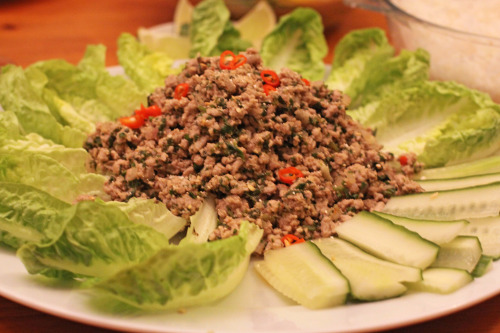Spicy lamb burgers with halloumi, tzatziki and harissa
 Monday, March 5, 2012 at 11:26PM
Monday, March 5, 2012 at 11:26PM I am particular about a lot of things, but I am particularly particular about burgers. I grew up in the land of Oz, where a ‘true blue’ burger is cow or nothing and comes with lettuce, tomato, onion (fried, not raw) and beetroot. Yes, beetroot. Some add egg, bacon and pineapple and call it The Works, but I find it doesn’t – you can’t pick it up for a start. But you can get messy - I add tomato sauce and mayonnaise and lots of it. Oh, and guerkins too.
A good burger should be big and sloppy and dribble down your arms. It should require a lot of napkins, a lot more than you ever get given. It should be impossible to put down once picked up for you’ll never be able to pick it up again in one piece. And it should not be eaten on a first date.
When I eat burgers out in London I am inevitably disappointed. I know beets are unlikely, but most of the time your lucky to even get a slice of tomato. So I make them at home and until recently I have never deviated from the above, but…
There is a new kid on my block. And it is making an impression.

